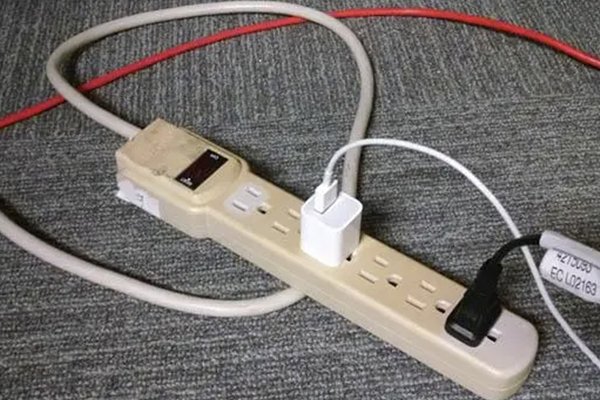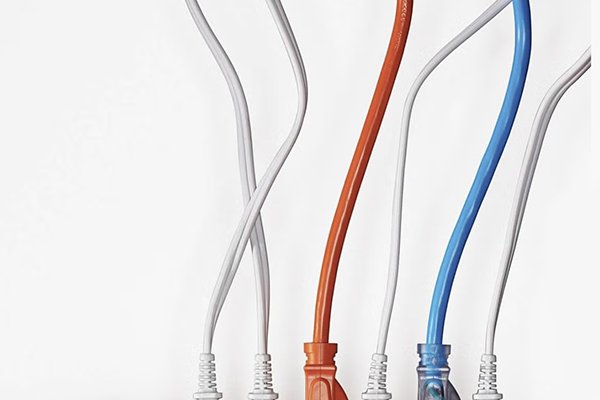Signs Your Power Strip Might Be Too Old to Use

I used to think power strips1 could last forever—just plug and go, right? But after a close call with a scorched plug, I realized these little guys age, and quietly.
Old power strips1 can pose serious safety risks—think fire hazards, electrical shocks, or fried devices. Cracks, loose sockets, and missing surge protection2 are all red flags that it’s time to upgrade.
So before your next socket sparks a surprise, let’s look at the warning signs.
Visible Damage: Cracks, Discoloration, or Melted Plastic
One of the first things I check is the outside—because your power strip3 will often look unsafe before it actually fails.
If your power strip3 has any visible damage4—like yellowed plastic, burn marks, or tiny cracks—it’s no longer safe. Heat, sunlight, and time can all degrade the casing, increasing fire risk.

What to Look For:
- Discoloration near outlets or cord base
- Warping or cracking of the housing
- Burnt smell or melted plastic near plugs
| Type of Damage | What It Means |
|---|---|
| Yellowed casing | Sunlight or heat exposure, aged plastic |
| Melted areas | Overheating, possibly overloaded |
| Surface cracks | Brittle material, loss of insulation |
These are not just cosmetic issues—they’re your first warning sign.
Loose Outlets or Poor Contact When Plugging In Devices
Ever had a plug just fall out of a socket? That’s not just annoying—it’s dangerous.
Loose or wobbly sockets inside your power strip can lead to arcing, heat buildup, and even fire. If you need to jiggle a plug to get it to work, it’s time to toss that strip.

Key Warning Signs:
- Plugs don’t stay fully inserted
- Devices flicker or lose connection
- You hear faint crackling sounds
| Symptom | Potential Risk |
|---|---|
| Loose contact | Arcing = heat buildup = fire hazard |
| Intermittent power | Damaged internal connections |
| Plug falls out easily | Spring contacts likely worn out |
A secure connection is critical. If it’s not tight, it’s not right.
No Surge Protection or Missing Indicator Lights
Older power strips often lack something essential: surge protection5. And without that, they’re just glorified extension cords.
If your strip doesn’t have a surge protection indicator light6ell.com/support/kbdoc/en-us/000145629/information-about-surge-protectors-and-how-they-work-kb-article-120517)5 indicator light—or if the light used to be on and now isn’t—it likely no longer offers protection. That means your electronics are vulnerable to spikes.

What to Check:
- Is there a green or red “Protected” light?
- Has the light gone out recently?
- Is there a reset button or fuse that trips easily?
| Feature | What It Means |
|---|---|
| No “protected” light | May not have surge protection at all |
| Light no longer works | Surge protection may be depleted |
| Frequent tripping | Degraded internal components |
Surge protectors wear out silently after repeated spikes—especially if you’ve had a nearby lightning storm or power outage.
Age Matters: Why You Should Replace Power Strips Every Few Years
Even if it looks fine, an old power strip can still be a silent hazard hiding in plain sight.
Experts recommend replacing power strips every 3–5 years, especially in high-use environments. Plastic breaks down, contacts wear out, and surge protection circuits degrade over time—even if you don’t notice.

Lifespan Considerations:
- High-traffic areas (kitchens, offices) = faster wear
- Surge protectors degrade with each voltage spike
- Lack of compliance with current safety standards
| Power Strip Age | Recommended Action |
|---|---|
| < 3 years | Likely safe if in good condition |
| 3–5 years | Inspect closely for wear or damage |
| 5+ years | Strongly consider replacing it |
Also, if your strip doesn’t have CE or UL/ETL certification, it’s worth upgrading to a compliant model that’s built for safety.
Conclusion
If your power strip is cracked, loose, or old enough to vote—it’s probably time to retire it. Don’t wait for smoke or sparks to make the decision for you. Swap it for a safer, surge-protected model that gives you peace of mind every time you plug in.
-
Understanding the risks of old power strips can help you prevent potential hazards in your home. ↩ ↩
-
Learning about surge protection can help you choose the right power strip to safeguard your devices. ↩
-
Understanding safety tips for power strips can help prevent electrical hazards and ensure safe usage in your home. ↩ ↩
-
Learning to identify visible damage on electrical devices is crucial for maintaining safety and preventing accidents. ↩
-
Understanding surge protection is crucial for safeguarding your electronics from voltage spikes. ↩ ↩
-
Learn how this indicator can help you determine if your power strip is still providing protection. ↩






